Twenty-barreled twin barreled revolver
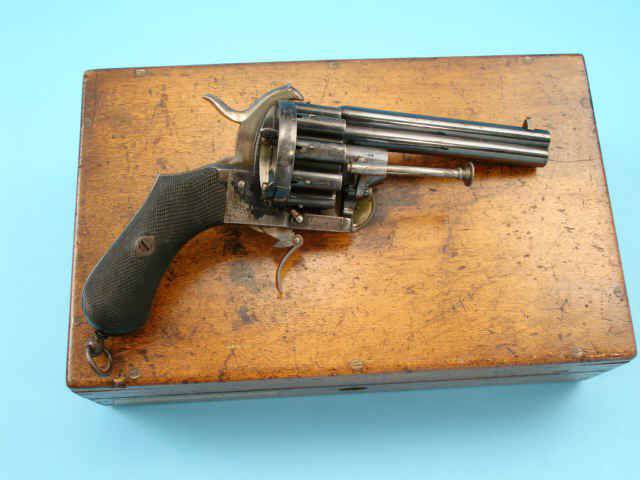
The popularity of hairpin revolvers at the end of the 19 century was very high. Due to the relatively low cost, fairly simple design and reliability, they were popular in many European countries. Spike revolvers were successfully used in the army and as a civilian weapons.
Attempts to create multiply charged revolvers for a hairpin cartridge led to the appearance of very unusual designs. One of these models is the twin-barreled twenty-barreled Lefosche revolver (Two Barrel 20-shot Pinfire Revolver Lefaucheux).
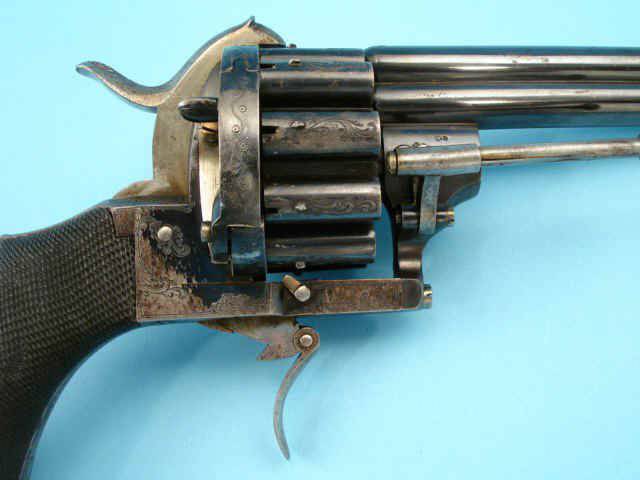
The double-barreled revolver is designed to fire alternately from the upper or lower trunks, which is ensured by the two-row arrangement of the drum's chambers. The trigger mechanism of double action when cocking the hammer simultaneously moved the drum, summing up the cartridges of the upper or lower rows of the drum to the line of fire alternately.
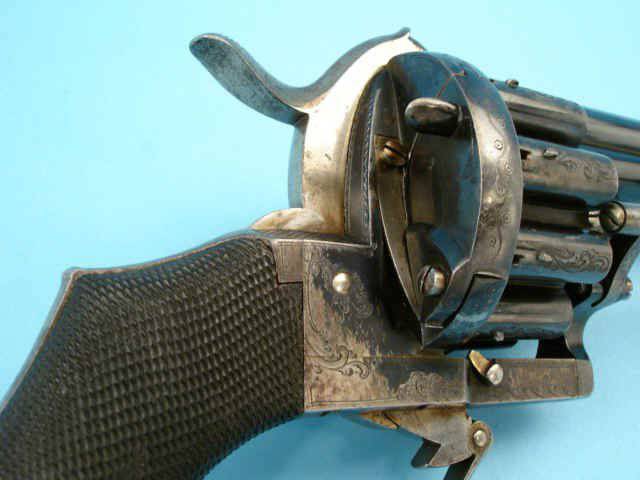
The door with a spring, located on the right side of the frame of the revolver opened to the right and down, providing access to the chambers of the drum.
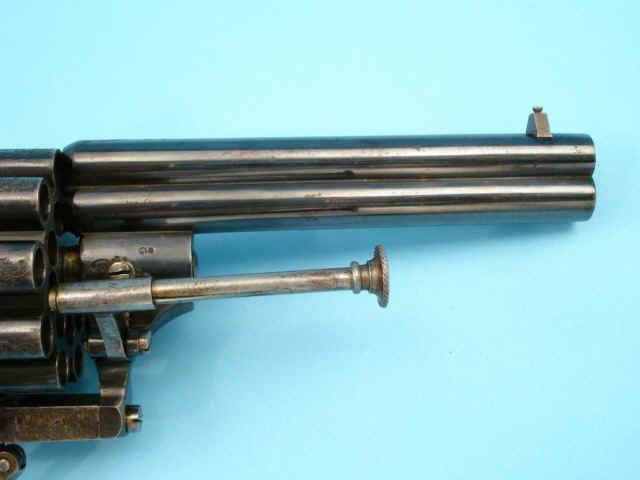
On the right side, a cleaning rod-extractor was attached to the front of the frame. Its hinged fastening made it possible to extract the sleeves from the chambers of both rows of the drum.
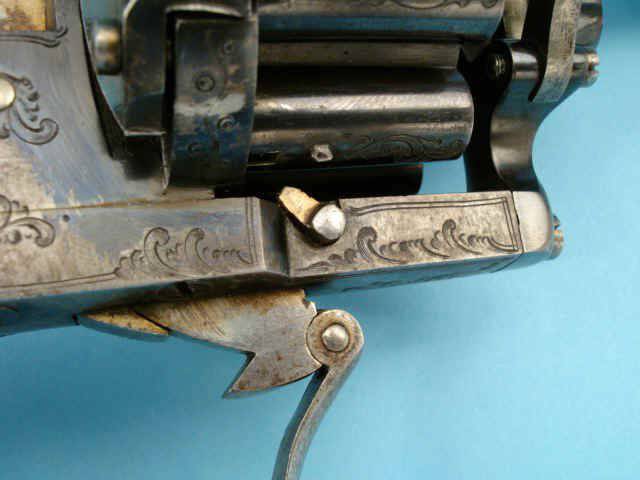
The trigger guard at the revolver was missing, the trigger was made collapsible. The use of a folding trigger on a massive revolver looks at least strange, although it was probably an attempt to reduce the overall dimensions and weight of the weapon.
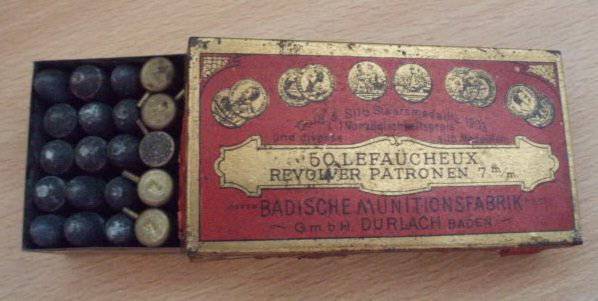
In a two-barreled twenty-bar stud hairpin revolver, 7 mm bar caps were used.
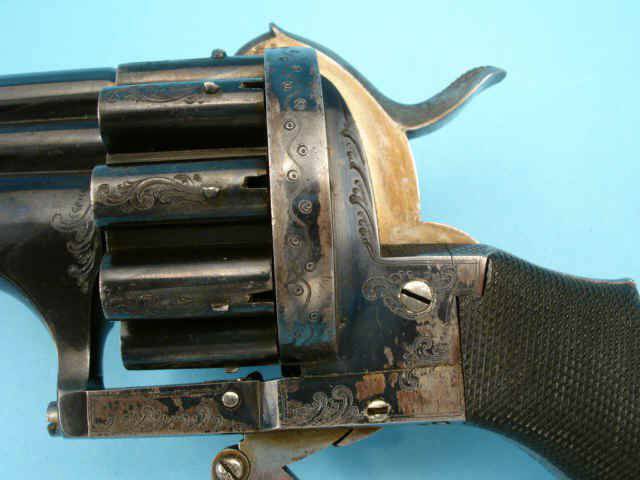
The use of small-caliber cartridges, also contributed to the reduction of weight and dimensions of weapons. The vertical arrangement of the studs in the drum chambers was provided by notches in the upper parts of the chamber.
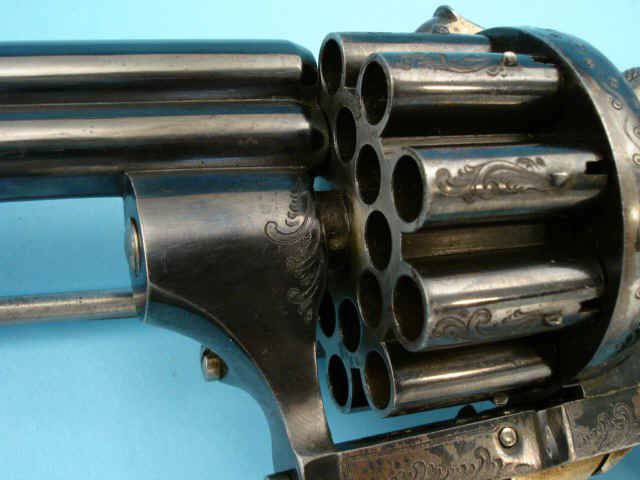
The drum of the revolver had twenty chambers. Ten were located in the outer row of the drum, ten were located in the inner row. The metal parts of the frame and the drum of this Belgian-made revolver are richly decorated with an engraving of vegetable ornament.

A similar design was patented by Eugene Lefoche in 1864 — 1865. The patent under the number 64960 of 31 in October 1864 of the year, as well as the number 0649690 of 03 in February of 1865, was obtained in France.
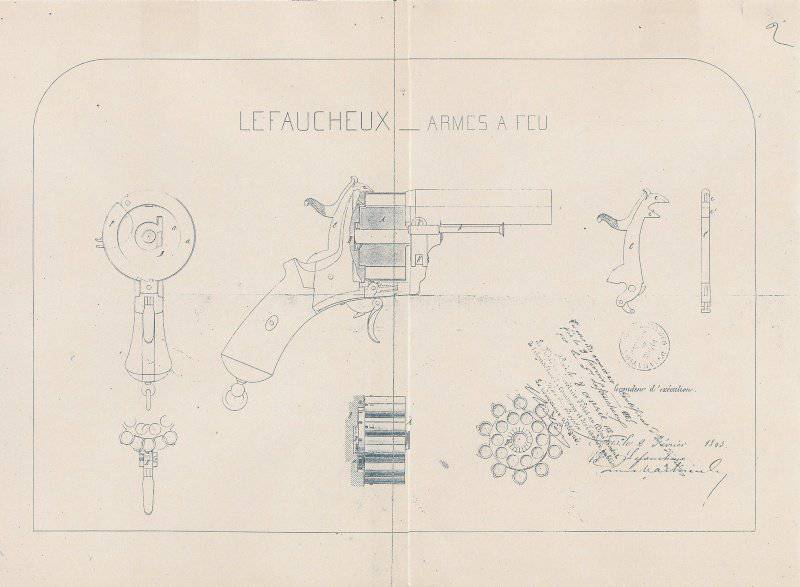
Belgian patent applications were listed under the numbers 16957 from 29 in October 1864 of the year and 17473 from 07 in February of 1865.
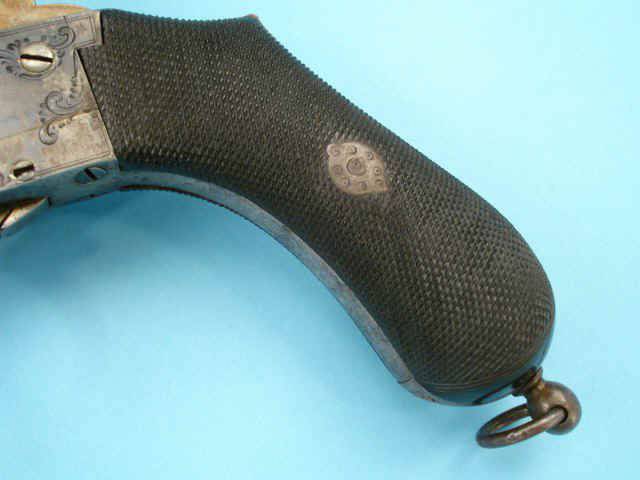
The cheeks are made from rosewood. The surface of the cheeks is covered with a small diamond-shaped notch. The cheeks of the handle are connected with a screw, screwed on the right side, and a nut is pressed into the left cheek. In the lower part of the handle there is a ring for the strap.
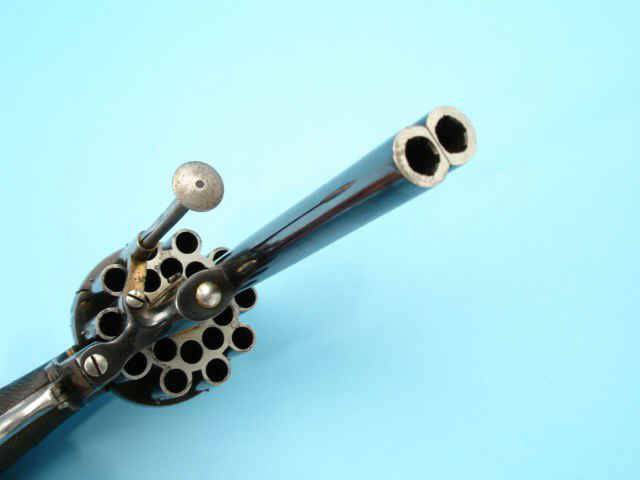
The channels of the revolver barrels had five rifling. The length of the upper and lower barrel 127 mm.
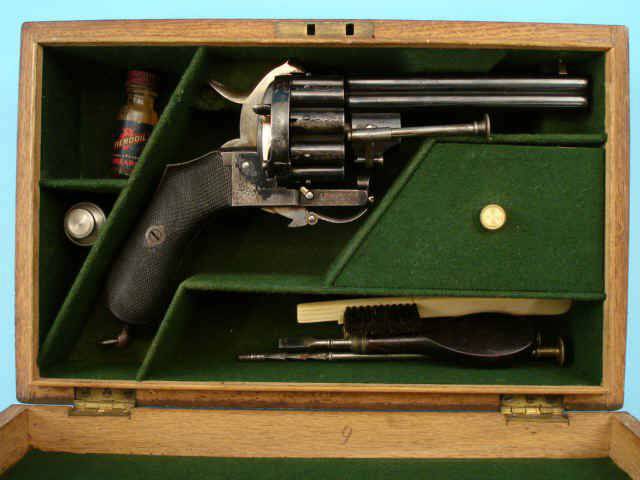
The spike revolver was usually equipped with an oiler, ramrod and screwdriver. Weapons fit in oak weapons box, trimmed with a green cloth.
Twist-barreled double-barreled stud revolvers were also produced with a simpler finish.
The metal parts of the drum frame were crowed, the cheeks of the handle were made smooth.
The axis of the drum is fixed in the frame of the revolver between the front desk and the breech. The protruding part of the axis of the drum, which allows to extract the axis from its nest, is not provided by the design.
The trigger of a double-barreled hairpin revolver had two strikers in order to be able to strike at the studs of the cartridges installed in the outer and inner rows of drum cavities.
On some revolvers, the door opened to the right-up, by the way as in the figure for patents. When the door was open, access was provided to the chambers of both the outer and inner rows of the drum.
At the top of the barrel of this revolver there is a label in the form of the text "Campagnac Arquebusier à Bordeaux"
Dvosstvolnye two-barreled hairpin revolvers Lefoshe became a formidable weapon, providing the owner with reliable protection and impressive ammunition. However, the large size and weight of the revolver negated these advantages.
The appearance of double-barreled hairpin revolvers has become an interesting and colorful page in stories weapons. Spike double-barreled revolvers are an adornment of many collections of museums and private antique dealers, especially in European countries. The cost of such revolvers is 6 - 12 thousand dollars.
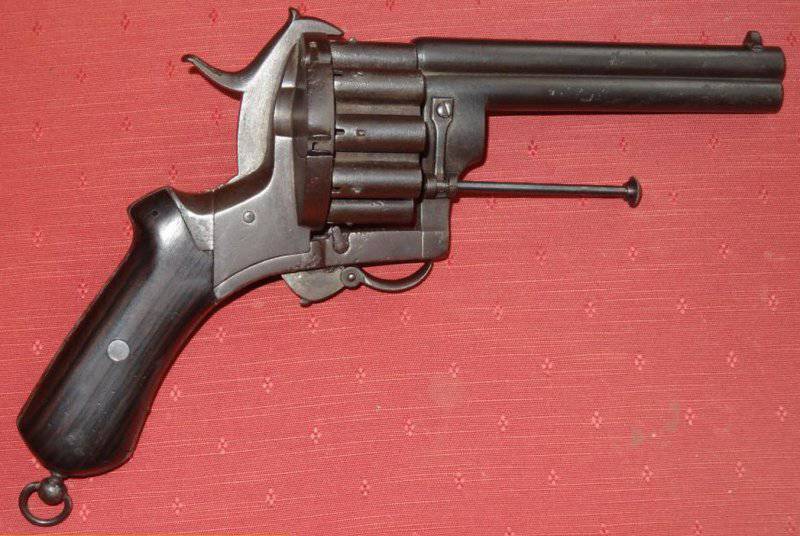
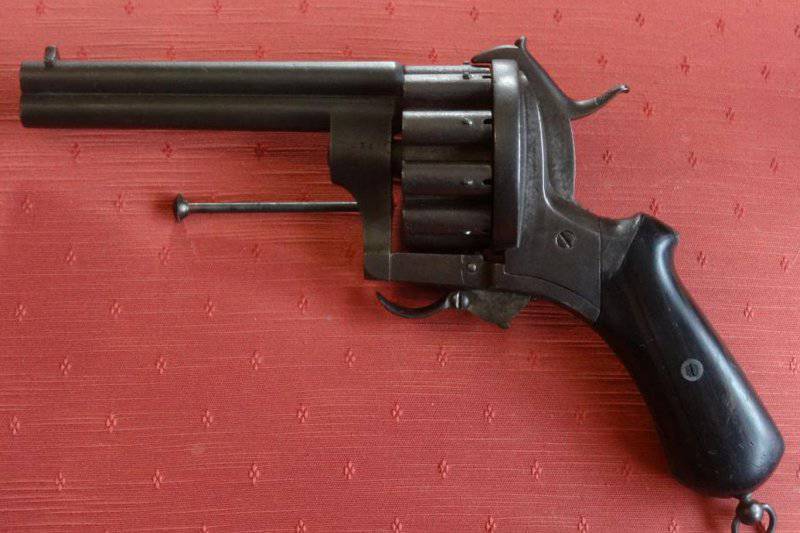
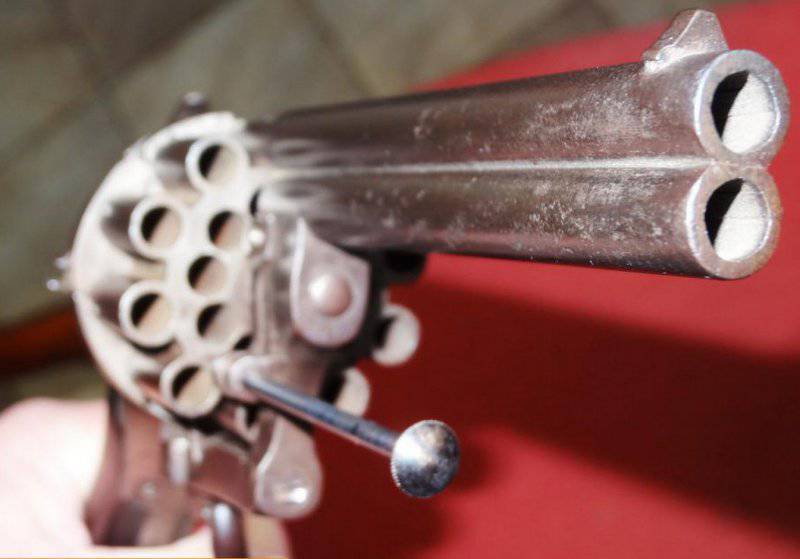
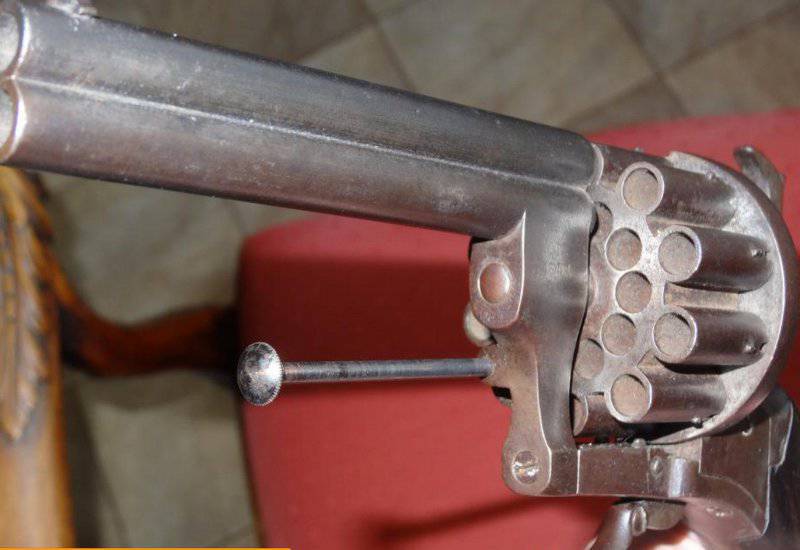
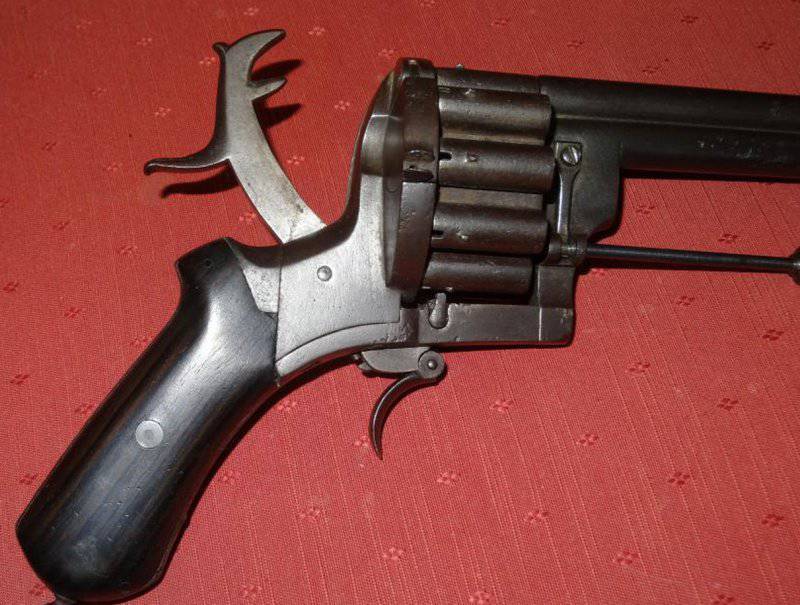
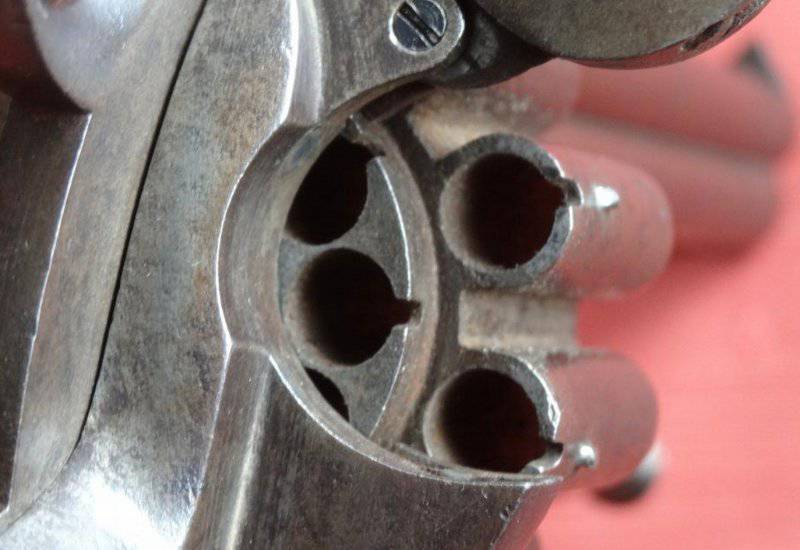
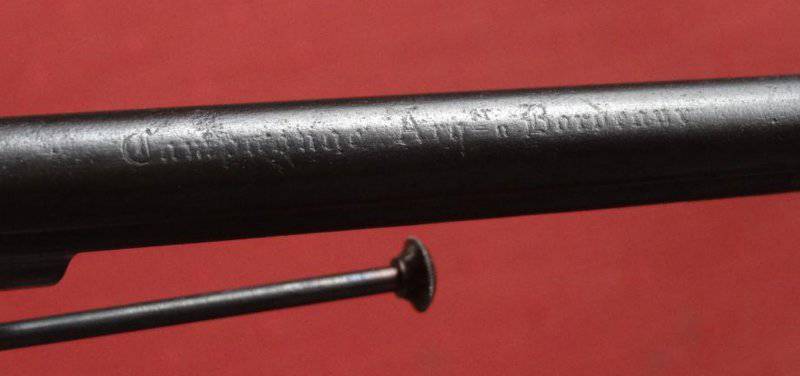

Information